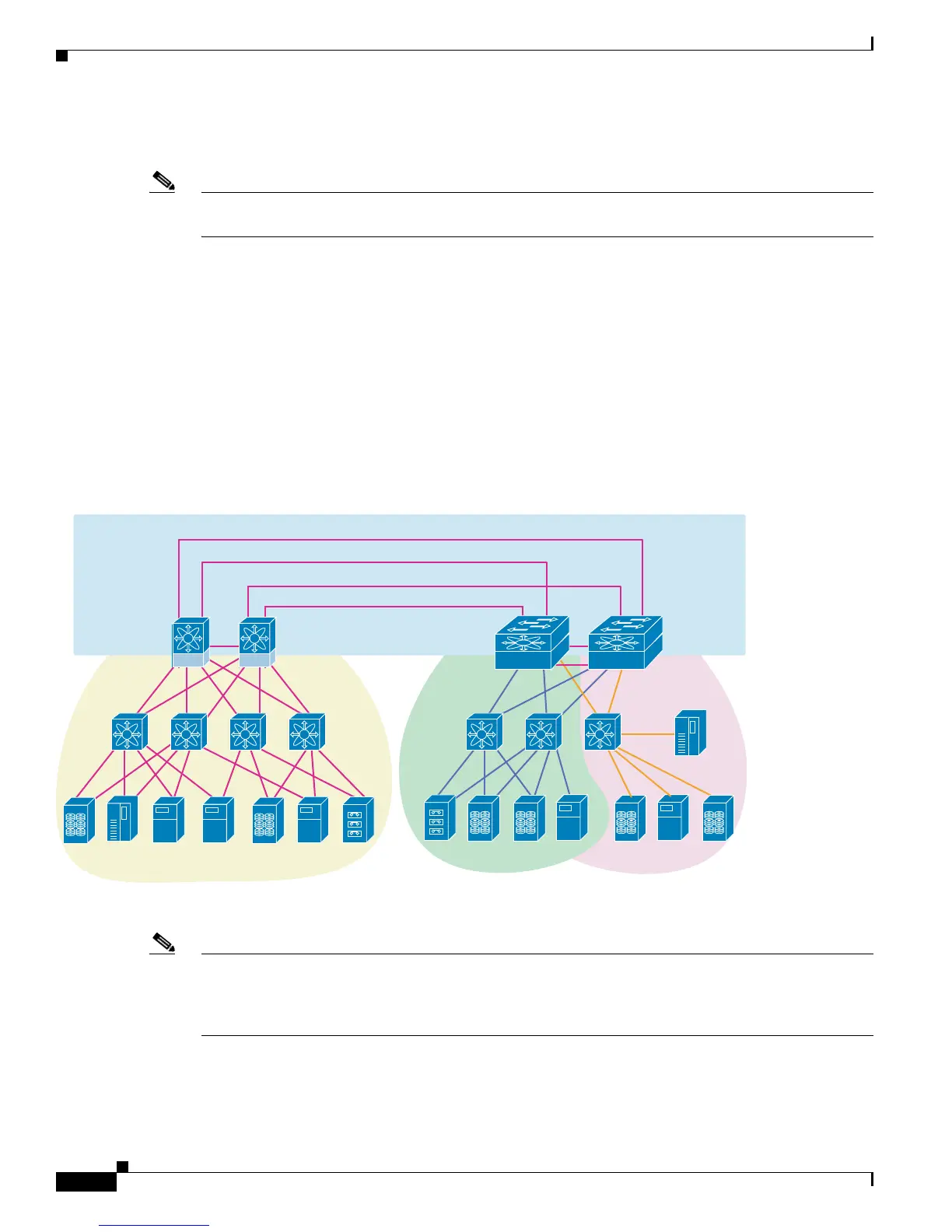Send documentation comments to mdsfeedback-doc@cisco.com
29-2
Cisco MDS 9000 Family Fabric Manager Configuration Guide
OL-17256-03, Cisco MDS NX-OS Release 4.x
Chapter 29 Configuring Inter-VSAN Routing
Inter-VSAN Routing
About IVR
Note IVR is not supported on the Cisco MDS 9124 Fabric Switch, the Cisco MDS 9134 Fabric Switch, the
Cisco Fabric Switch for HP c-Class BladeSystem, and the Cisco Fabric Switch for IBM BladeCenter.
Data traffic is transported between specific initiators and targets on different VSANs without merging
VSANs into a single logical fabric. Fibre Channel control traffic does not flow between VSANs, nor can
initiators access any resource across VSANs other than the designated ones. Valuable resources such as
tape libraries are easily shared across VSANs without compromise.
IVR is in compliance with Fibre Channel standards and incorporates third-party switches, however,
IVR-enabled VSANs may have to be configured in one of the interop modes.
IVR is not limited to VSANs present on a common switch. Routes that traverse one or more VSANs
across multiple switches can be established, if necessary, to establish proper interconnections. IVR used
in conjunction with FCIP provides more efficient business continuity or disaster recovery solutions (see
Figure 29-1).
Figure 29-1 Traffic Continuity Using IVR and FCIP
Note OX ID based load balancing of IVR traffic from IVR- enabled switches is not supported on Generation
1 switching modules. OX ID based load balancing of IVR traffic from a non-IVR MDS switch should
work. Generation 2 switching modules support OX ID based load balancing of IVR traffic from
IVR-enabled switches.
VSAN 1
VSAN 2
VSAN 3
Transit VSAN (VSAN 4)
FC or FCIP links (multiple links for redundancy)
T
S1
S2
FCFC
FCFCFCFC FCFC FCFC
FCFCFC
IVR-Enabled
Switch
105294
MDS1 MDS2 MDS3 MDS4

